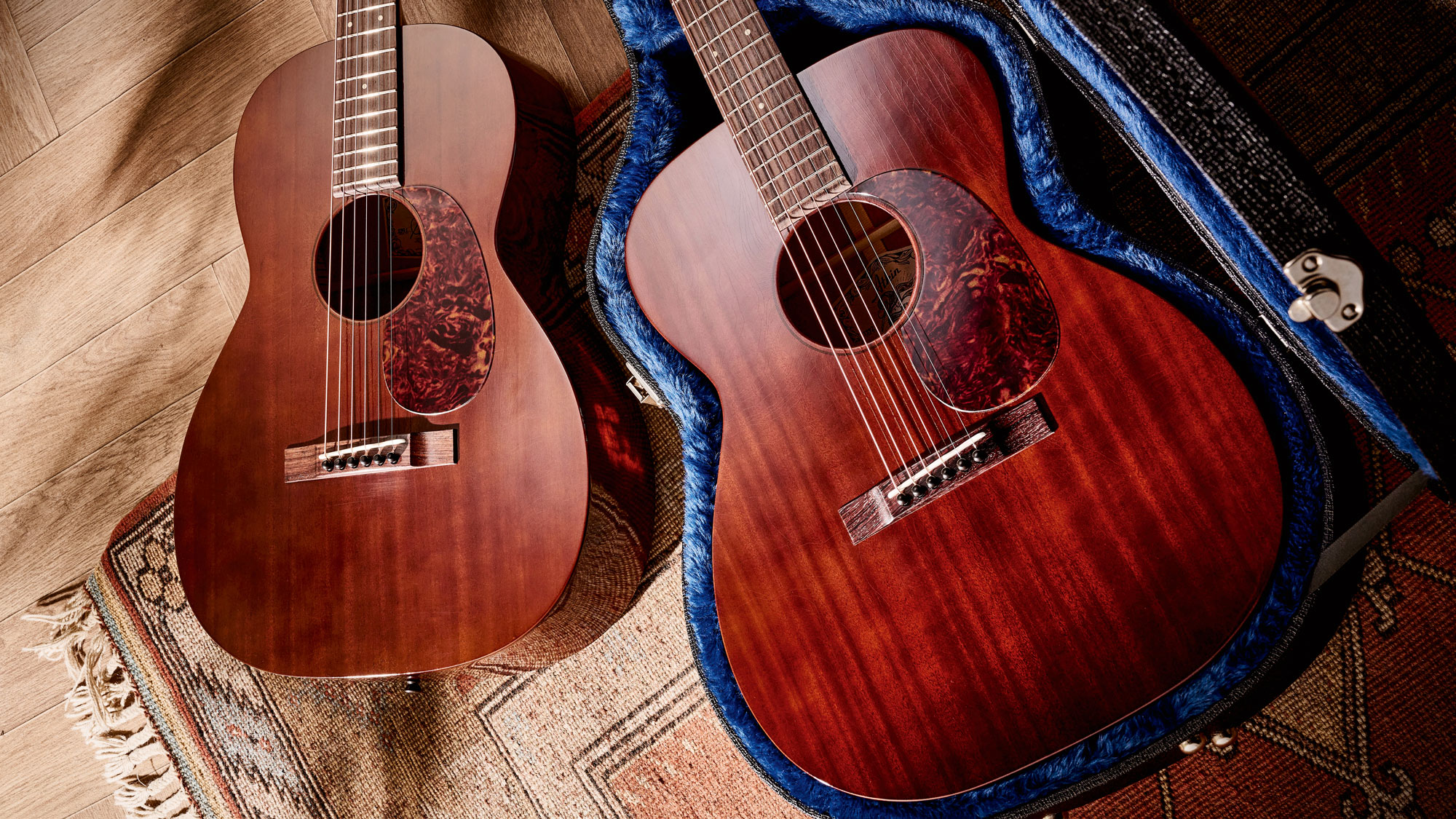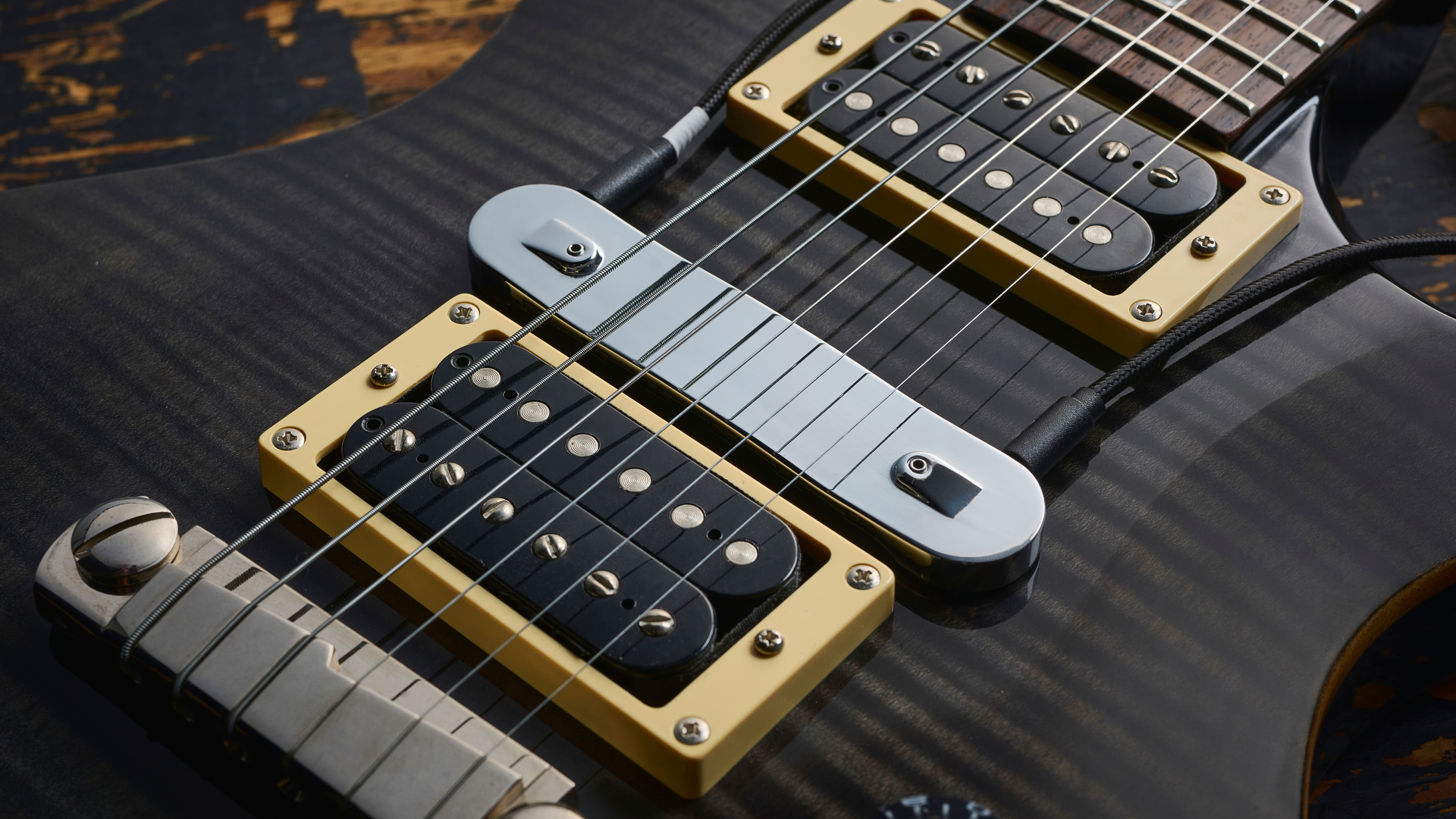Guitar World Verdict
It certainly has been one of those experiences where everything comes together – tone and playability – combined with that elusive mojo that is the hallmark of a great instrument. Seek them out!
Pros
- +
000-12S is an excellent instrument with a rich sound and bags of volume, too.
- +
Very lap-friendly.
- +
Depth of tone and a great playing experience.
- +
00014 looks fabulous, too!
Cons
- -
Nothing to see here.
You can trust Guitar World
What is it?
It’s amazing to think that a guitar that was born in an era of great financial hardship and social distress could be so revered by players almost 100 years later.
But such is the case with the so-called ‘Depression-era’ acoustics: essentially stripped-down, no-frills instruments that were aimed at the musicians of the day, themselves enduring the full clout of the famous financial bottoming in the USA during the 1930s.
Recently, we’ve seen Martin answer the call with its Streetmaster acoustics, which were reliced to reflect the rough and tumble of the years, looking like they’d done their time in the juke joints and barrel houses of the Deep South.
And, of course, Martin’s all-mahogany models have been more and more visible in its catalogue in recent years, too. It seems that modern-day players have found themselves attracted to the warmth and rounded tones that an all-mahogany instrument can deliver.
The idea might have been born out of a threadbare necessity, but it’s enjoying a richer contemporary life under the fingers of blues pickers and singer-songwriters everywhere.
Canterbury-based Atkin Guitars, under the helm of luthier Alister Atkin, has also answered the call to produce a range of mahogany instruments under the banner ‘Dust Bowl’ and it seems that it was customer demand that energised the series in the first place.
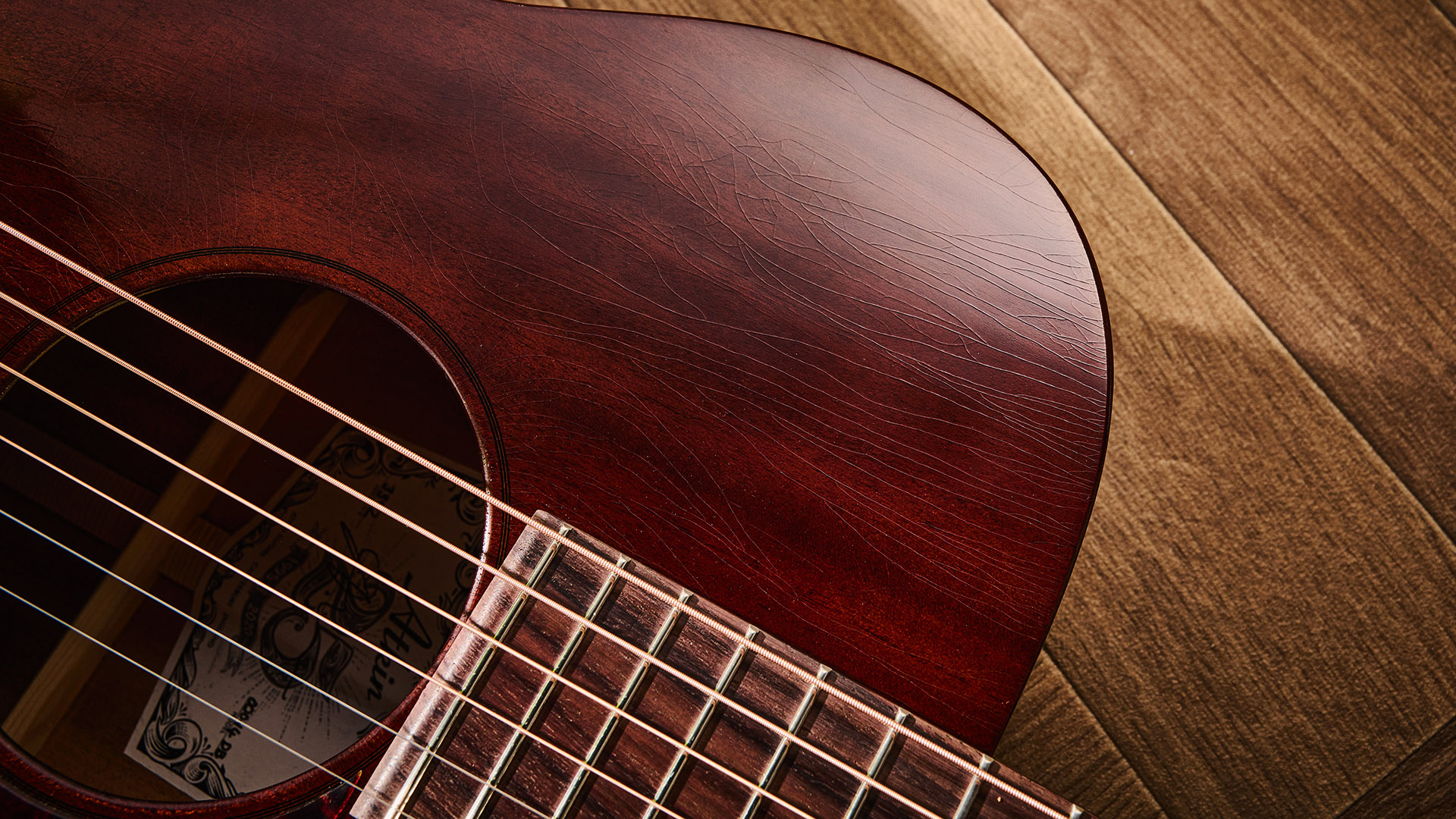
“We’d made a few for people when they’d asked,” Alister tells us, “and I saw it as a bit of an opportunity to get into making something really nice and vintage feeling for those people out there. Weirdly, more people out there than you would imagine want a guitar like that.”
Alister’s Dust Bowl Series comprises seven models, including an 0, 00 and 000 in the 14-fret-to-the-body series and the same body sizes in the slotted-head 12-fretters. Completing the line-up, there’s also a parlour model. We have one from each of the two main series – a 0012 and a 00014 – in front of us today and so let’s fire up our best acoustic blues licks and zoom on in.
Just as with house hunting, there’s a lot to be said with regards to kerb appeal. In this instance, that equates to that first look upon opening the case. With this brace of Atkins, there was a sharp intake of breath as they are both beautiful in their simplicity, and the crazed finish on both encourages us to think that we’re looking at some true vintage pieces. If they sound as good as they look, we’re in for a treat…
You’ve probably already guessed that the construction details here are pretty straightforward. And, of course, they’re common to both guitars, apart from the differences in physical size and neck/body joints.
To summarise, then, we have African mahogany bodies and necks with Indian rosewood fingerboards, bridges and headstock facias. Tuners on both guitars are by Gotoh. On the 14 these are open-back with a realistic vintage sheen to them, and on the 12 they are the three-a-side ‘classical style’ to complement the slotted headstock.
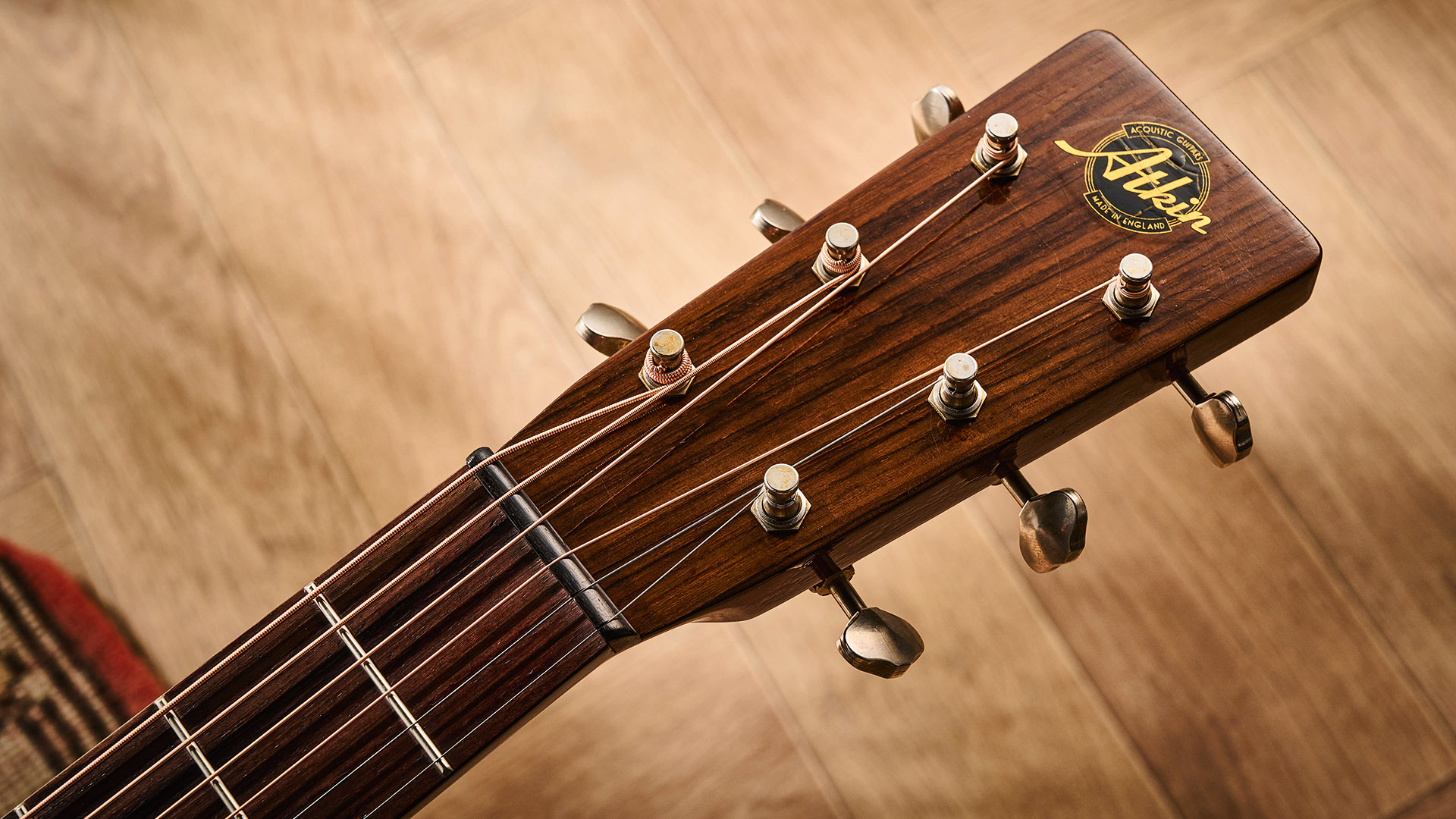
One thing that struck us as slightly unusual is that both guitars have ebony nuts, instead of the more usual real or synthetic bone.
I’ve used mahogany for many years before this and, tonally, I’ve found that it ended up sounding pretty similar if you treated it like a Sitka spruce top
Alister Atkin
“That’s what they used back in the day,” says Alister. “A lot of those guitars had ebony on them and I think it works well. It looks really cool.”
From just a casual look at the nuts on both guitars you would be sure that the material involved was some sort of synthetic material. But up close, it’s possible to see that it is, in fact, wood that has been polished to a shine – and cut to perfection at that. We were curious as to the effect that ebony, as opposed to bone, would have on tone.
“Difficult to know, isn’t it?” Alister agrees. “I think there may be a slight difference, and you could conceivably imagine that there is a slightly more muted feel. I don’t know, but I think mainly it’s aesthetic and keeping it vintage style.”
Both the guitars have received a very dark stain to the mahogany, accentuating the vintage vibe, and, as we’ve said, the lacquer is nitrocellulose that has been crazed to give an overall impression that these guitars might have a few virtual decades under their belts but have been well cared for in the process.
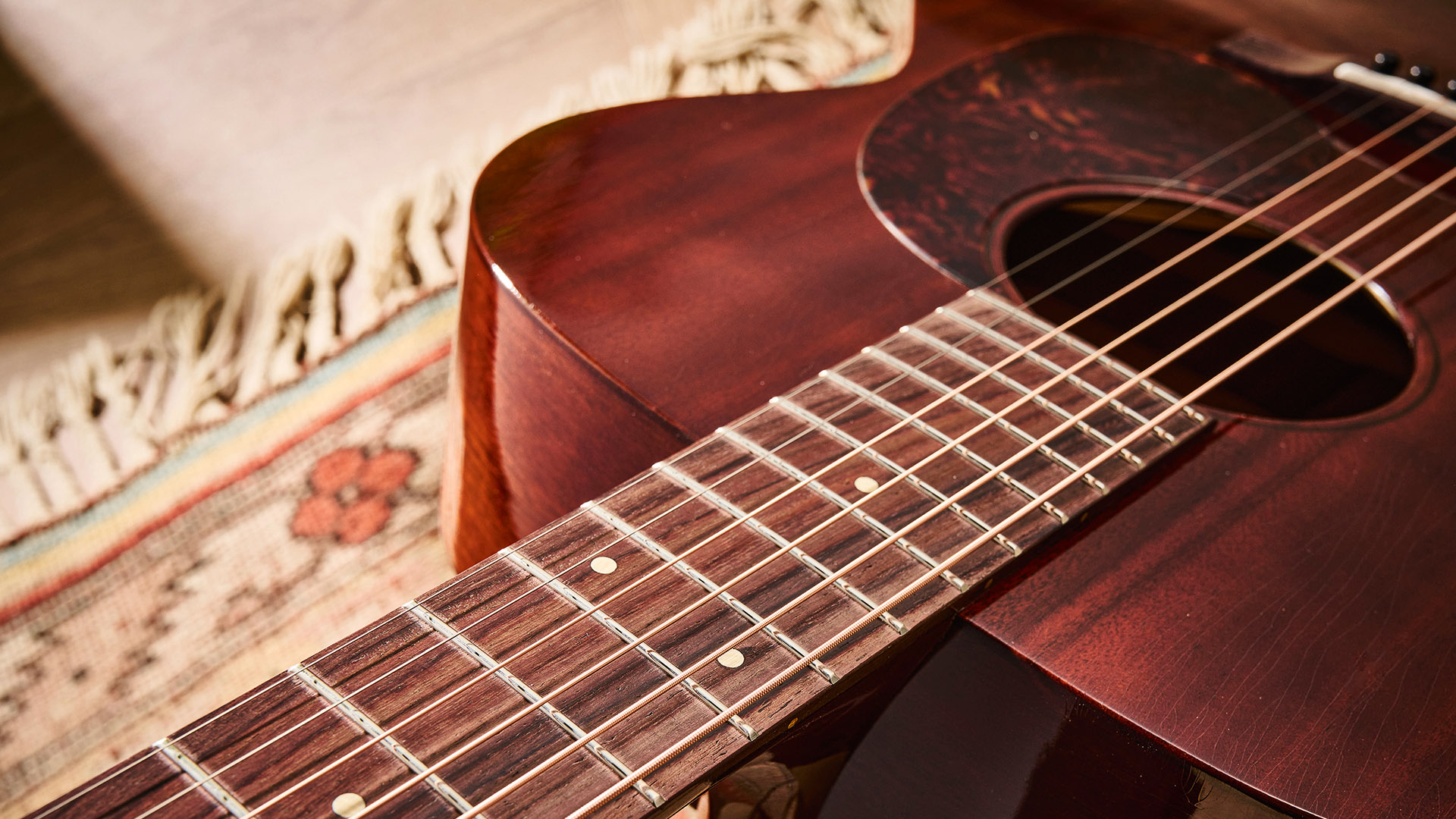
A mahogany top is hardly a revolutionary idea these days, but it’s surprising that a timber that we don’t regard as being cheap, in a contemporary sense, should be used almost a century ago on what was essentially a budget instrument.
Was it just that there was a lot of mahogany to hand back in the 1930s and that its status and cost has merely evolved and risen over the years? Alister: “I’m pretty sure that must have been what it was. The supply was good and it was just the way things used to sit back then.”
And on his impressions as far as using mahogany as a top wood instead of the more familiar Sitka spruce: “The top would typically be a little bit thinner than Sitka, depending on the size of the instrument,” says Alister.
“If you go down to our parlours, we’d be getting down to 2.2 to 2.5mm thick. But I’ve used mahogany for many years before this and, tonally, I’ve found that it ended up sounding pretty similar if you treated it like a Sitka spruce top. There’s a little bit of variation but not a great deal.”
Playability and sounds
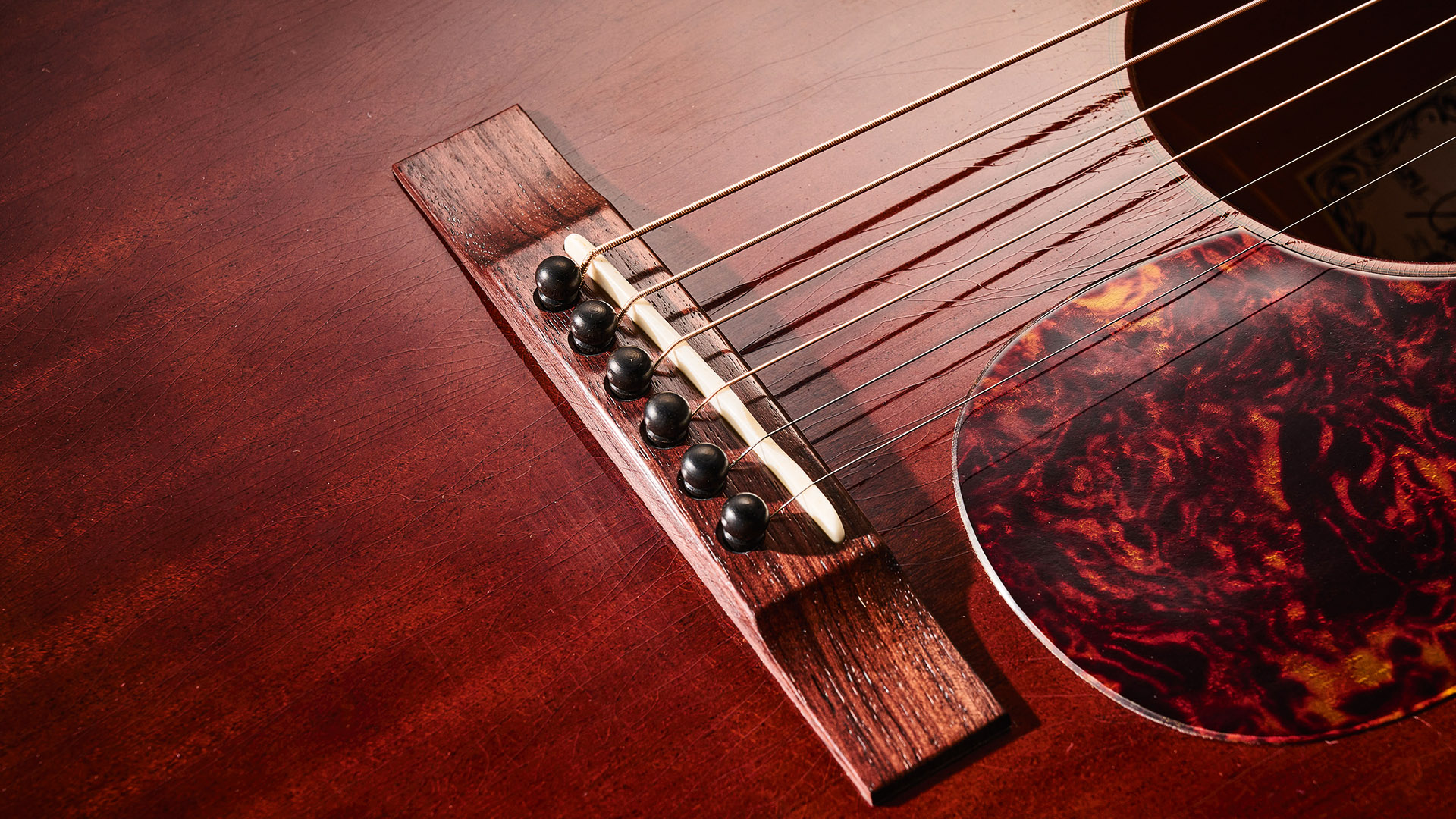
The first thing you notice on plucking this pair from their cases is how light they both are. And the finish is a beautiful dark chocolate colour with those crazy paving cracks to the lacquer that add to the story that these instruments belong to a much earlier age.
Once again, they share many characteristics in terms of feel as well as, somewhat surprisingly, sound – despite the difference in body sizes.
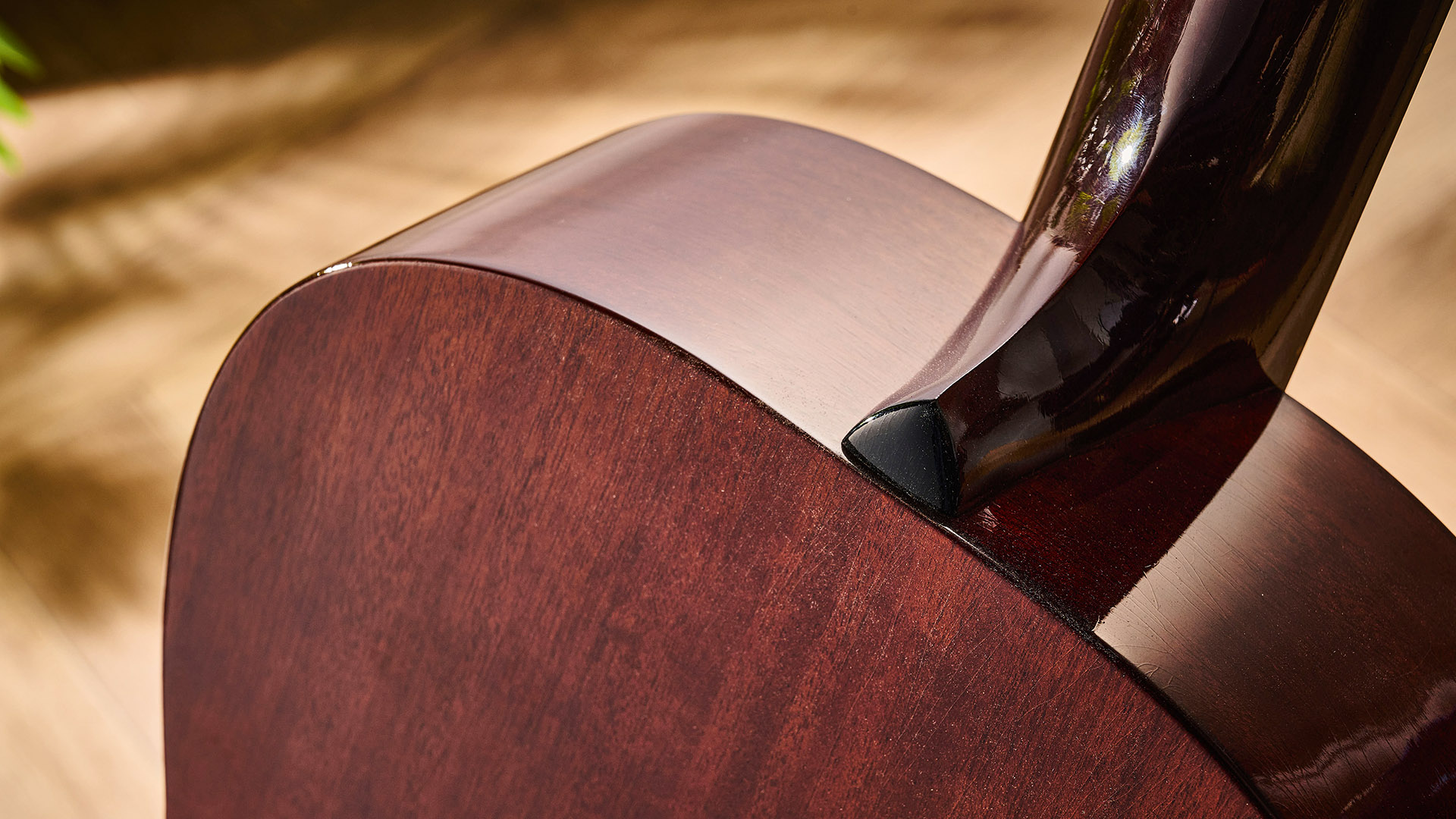
The 0012’s neck is chubby but not anywhere near unmanageable, and its light weight and trim dimensions makes it a very sociable sofa companion. Then there’s the sound: plentiful bass, well-rounded trebles, bags of toneful volume… there’s really not much more you could ask for.
Switching to the 00014 the story is pretty much the same, only the bass has more presence and maybe there’s a tad more volume but not as much as you’d think with the bigger body.
Both guitars took everything we threw at them from lazy, bluesy picking to animated strumming, meaning that these guitars would suit many different styles of player. We’ve certainly no complaints.
Verdict
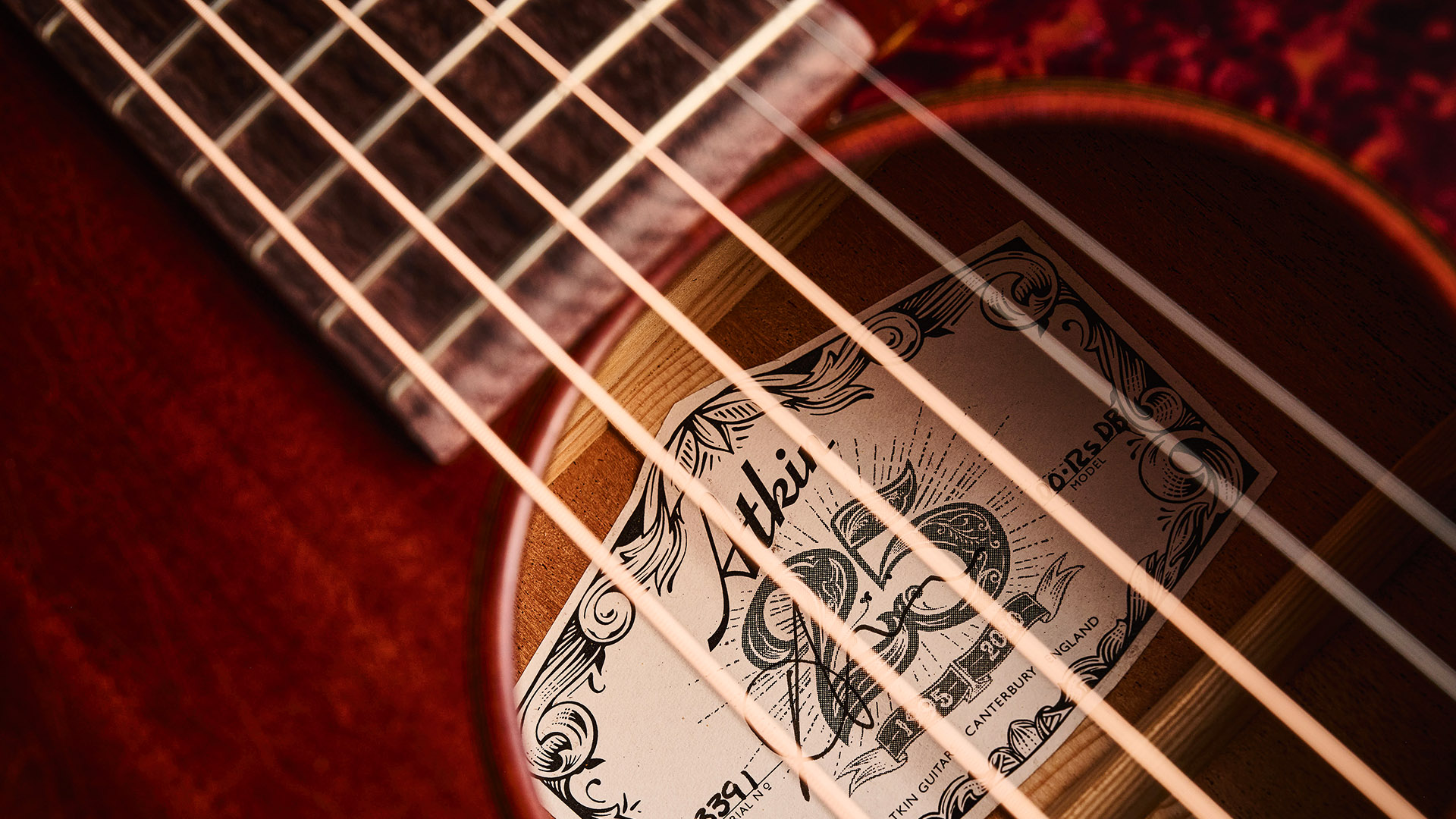
Alister’s reputation as a fine craftsman, working together with a hand-picked team of luthiers, is well deserved as all of the guitars we’ve seen coming from the workshop (including his electric models) have left us seriously impressed in the past.
These two instruments are no exception. We’ve said before that any review instrument that we spend far longer with than usual is a very good sign that we’re dealing with top-of-the-range guitars that have been crafted to an exceptional level.
Guitar World verdict: It certainly has been one of those experiences here where everything comes together – tone and playability – combined with that elusive mojo that is the hallmark of a great instrument. Seek them out!
Specs
Atkin Dust Bowl 0012S
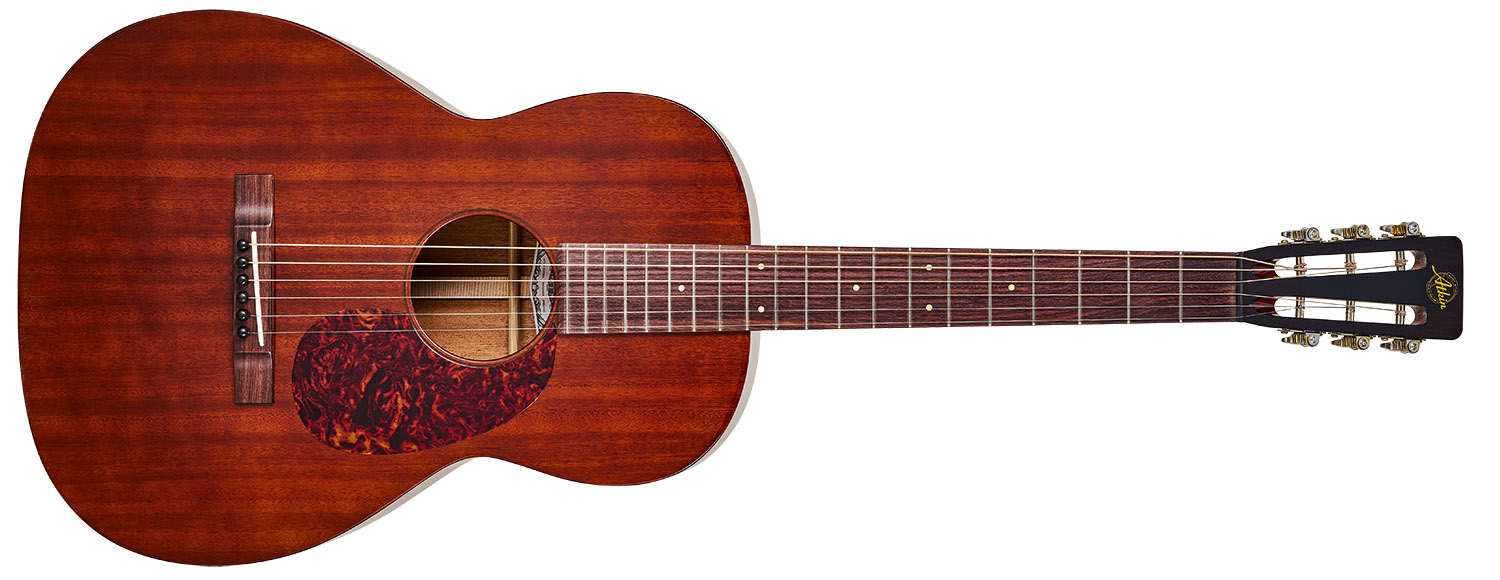
Price: £3,499 (inc case)
Origin: UK
Type: Slotted headstock 00
Top: Mahogany
Back/Sides: Mahogany
Max Rim Depth: 105mm
Max Body Width: 362mm
Neck: Mahogany
Scale Length: 632mm (24.9”)
Tuners: Gotoh antique three-a-side classical style
Nut/Width: Ebony/45mm
Fingerboard: Indian rosewood
Frets: 20
Bridge/Spacing: Indian rosewood w/ compensated bone saddle/58mm
Weight (kg/lb): 1.55/3.42
Options: Available with slotted or standard headstock to order
Range Options: The Atkin Dust Bowl 12 range currently includes 2 other body sizes, an 0 and 000 (both £3,499)
Left-Handers: Yes, no extra cost
Finish: Aged nitrocellulose
Atkin Dust Bowl 00014
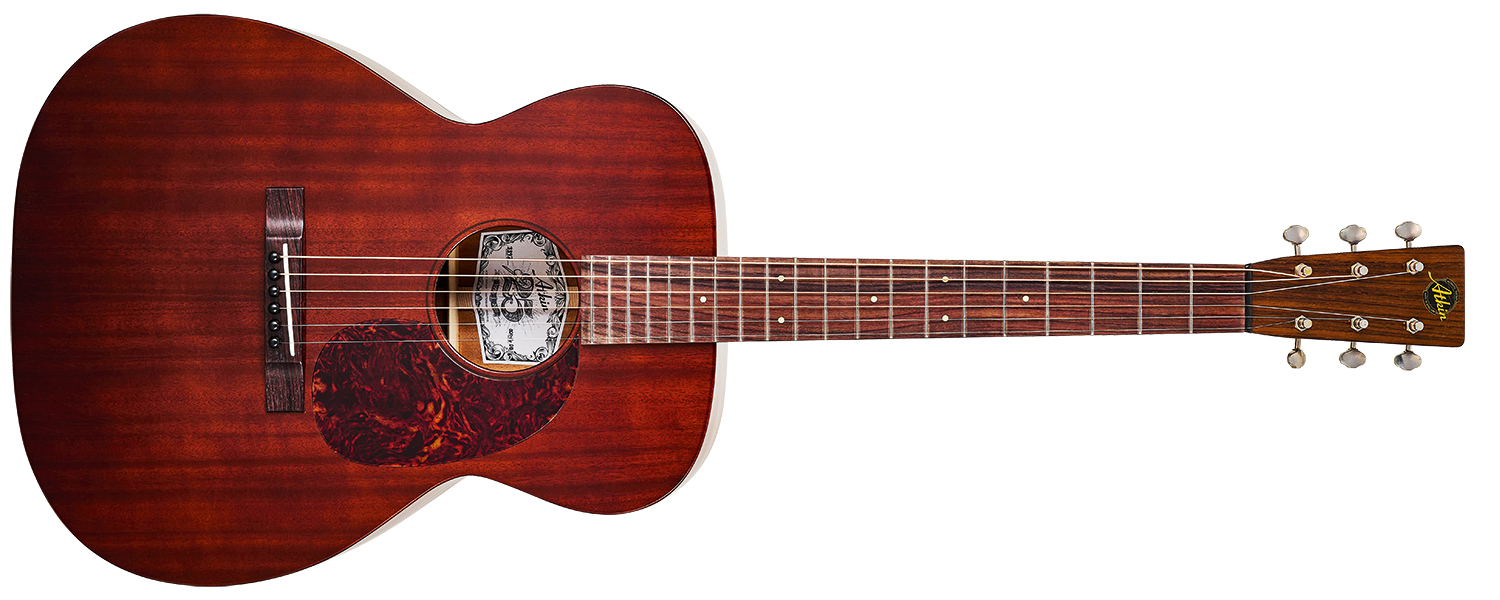
Price: £3,349 (inc case)
Origin: UK
Type: 000 acoustic
Top: Mahogany
Back/Sides: Mahogany
Max Rim Depth: 105mm
Max Body Width: 514mm
Neck: Mahogany
Scale Length: 632mm (24.9”)
Tuners: Gotoh antique open back
Nut/Width: Ebony/45mm
Fingerboard: Indian rosewood
Frets: 20
Bridge/Spacing: Indian rosewood w/ compensated bone saddle/58mm
Weight (kg/lb): 1.59/3.52
Options: None
Range Options: Atkin’s 14 range is available in 2 other body sizes: 0 and 00 (both £3,349)
Left-Handers: Yes, no extra cost
Finish: Aged nitrocellulose
Contact: Atkin Guitars
Hands-on videos
Atkin Guitars
Guitar Village
The Fretted Buffalo
With over 30 years’ experience writing for guitar magazines, including at one time occupying the role of editor for Guitarist and Guitar Techniques, David is also the best-selling author of a number of guitar books for Sanctuary Publishing, Music Sales, Mel Bay and Hal Leonard. As a player he has performed with blues sax legend Dick Heckstall-Smith, played rock ’n’ roll in Marty Wilde’s band, duetted with Martin Taylor and taken part in charity gigs backing Gary Moore, Bernie Marsden and Robbie McIntosh, among others. An avid composer of acoustic guitar instrumentals, he has released two acclaimed albums, Nocturnal and Arboretum.
“Among the most sought-after of all rhythm guitars… a power and projection unsurpassed by any other archtop”: Stromberg has made a long-awaited comeback, and we got our hands on its new Master 400 – a holy grail archtop with a price to match
The heaviest acoustic guitar ever made? Two budding builders craft an acoustic entirely from concrete because they “thought the idea was really funny”
